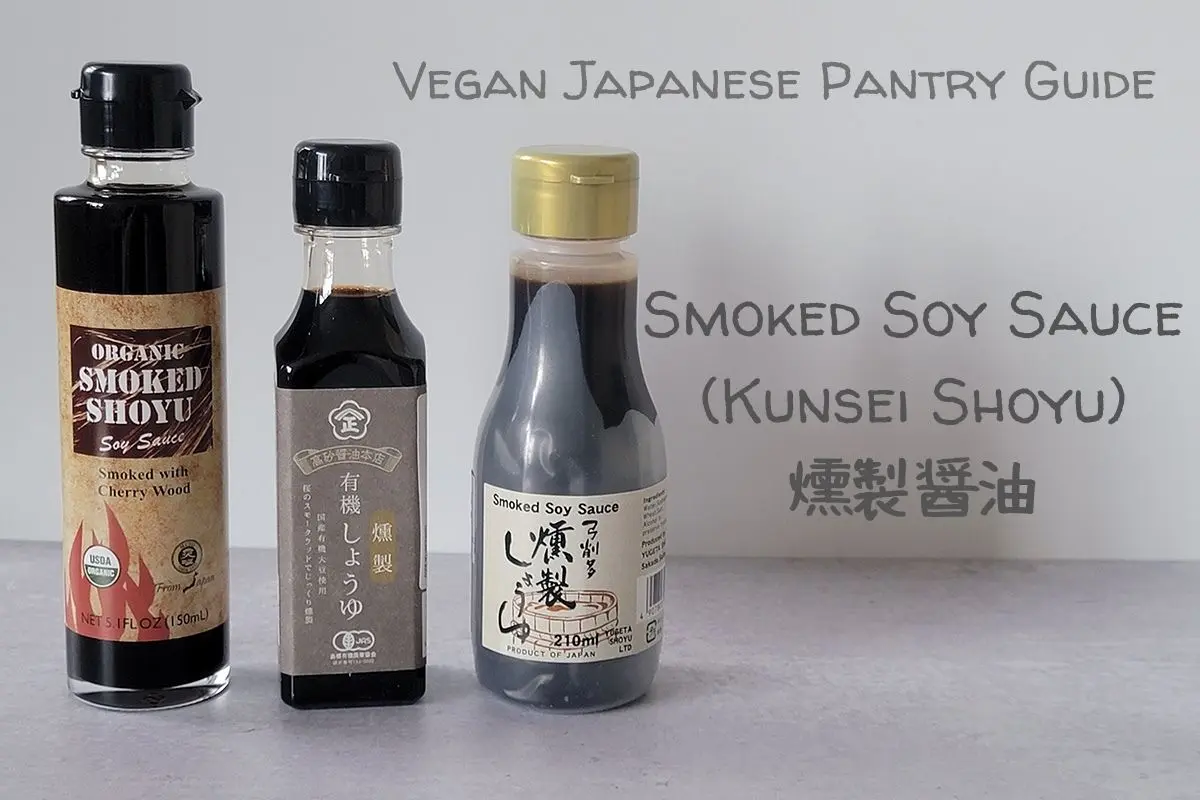If you're a fan of Japanese cuisine and are looking to add a unique twist to your dishes, smoked soy sauce is a must-have in your pantry. Smoked soy sauce, also known as Kunsei Shoyu in Japanese, is a smoked version of regular soy sauce that adds a rich smoky aroma and taste to your creations. In this article, we'll explore what smoked soy sauce is, how it's made, and how you can use it in your cooking.

What is Smoked Soy Sauce?
Smoked soy sauce is a variation of regular soy sauce that has been smoked with cherry wood. It has a rich and dark color, similar to regular soy sauce, but with a distinct smoky aroma and taste. The process of smoking soy sauce adds depth and complexity to its flavor profile, making it a versatile ingredient in Japanese cuisine.
Ingredients
The basic ingredients of smoked soy sauce include soybeans, water, wheat, salt, koji (aspergillus oryzae), and cherry wood smoke. The soybeans are soaked and steamed before being mixed with crushed dry-roasted wheat and koji mold. Salted water is then added to the mixture, which becomes unrefined soy sauce called moromi. The moromi is aged and fermented, then pressed and heated for pasteurization. Finally, it is smoked with cherry wood and bottled.
It's worth noting that the actual ingredients may vary slightly depending on the brand or type of smoked soy sauce.
Taste and Usage
When tasted on its own, the first thing you'll notice about smoked soy sauce is its smokiness, complemented by the familiar taste of regular soy sauce. Unlike multipurpose soy sauces, smoked soy sauce is best used as a finishing sauce or dipping sauce to enhance the flavor of your dishes.
There are various ways to enjoy smoked soy sauce. It can be drizzled over avocado slices, baked or grilled tofu, grilled vegetables, pasta dishes, natto, or even vegan cheese. The smoky flavor adds depth and complexity to these dishes, elevating their taste to a whole new level.
Storage and Where to Buy
Smoked soy sauce, like regular soy sauce, has a long shelf life due to its high sodium content. However, once opened, it's best to consume it as soon as possible to retain its freshness and smokiness. Store the unopened bottle in a dark place to avoid direct sunlight, and once opened, keep it tightly capped and refrigerated.
You may not find smoked soy sauce at your regular grocery stores or Asian grocery stores. However, you can find a variety of options online, including organic and non-GMO versions. Look for products made with Japan-grown soybeans for an authentic and high-quality smoked soy sauce.
- Can I make smoked soy sauce at home?
- Are there different types of smoked soy sauce?
- Can I use smoked soy sauce as a substitute for regular soy sauce?
Technically, you can smoke regular soy sauce at home to achieve a smoky flavor. However, it's much easier to buy smoked soy sauce from a store, as the process involves smoking the soy sauce with cherry wood.
Yes, there are different brands and variations of smoked soy sauce available. Each may have a slightly different flavor profile, so it's worth trying different options to find your favorite.
Smoked soy sauce is not a direct substitute for regular soy sauce due to its distinct smoky flavor. However, you can use it as a finishing sauce or dipping sauce to add a unique twist to your dishes.
Smoked soy sauce is a versatile ingredient that adds a smoky twist to your Japanese dishes. It's made by smoking regular soy sauce with cherry wood, resulting in a rich and dark sauce with a distinct smoky aroma and taste. Use it as a finishing sauce or dipping sauce to enhance the flavor of grilled tofu, vegetables, pasta, and more. Store it properly to retain its freshness and enjoy the unique taste of smoked soy sauce in your cooking. Try different brands and variations to find your favorite and elevate your vegan Japanese pantry to a new level!
If you want to know other articles similar to How to make smoked soy sauce: a guide to adding a smoky twist to your dishes you can visit the Condiments category.


Related Articles